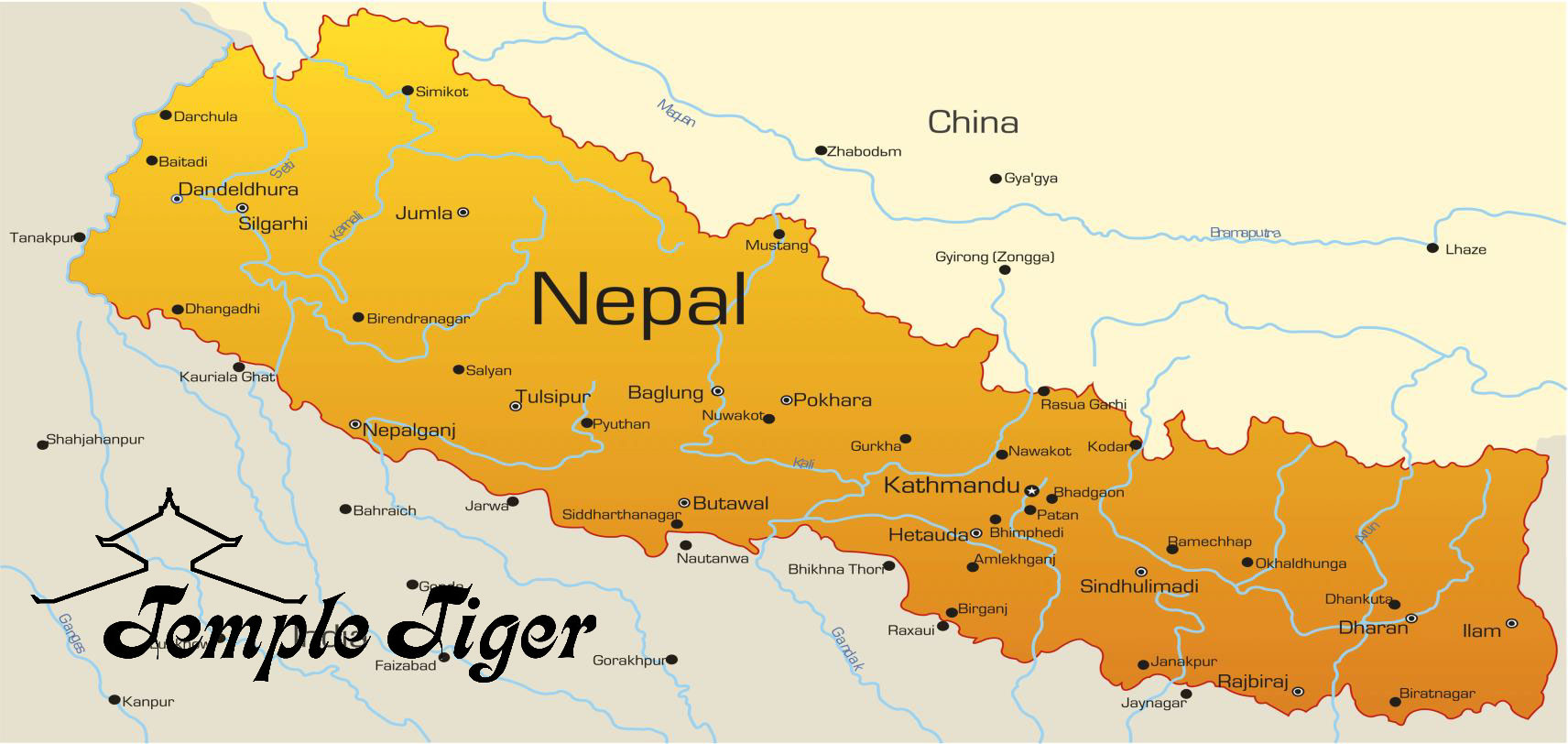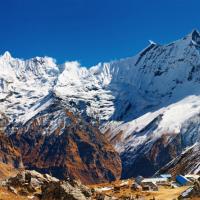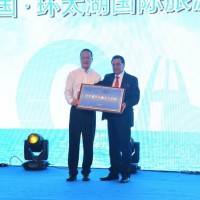Best of Nepal
Nepal, officially the Federal Democratic Republic of Nepal, is a landlocked sovereign state located in South Asia. It is located in the Himalayas and bordered to the north by the People's Republic of China, and to the south, east, and west by the Republic of India. With an area of 147,181 square kilometres (56,827 sq mi) and a population of approximately 30 million, Nepal is the world's 93rd largest country by land mass and the 41st most populous country. Kathmandu is the nation's capital and the country's largest metropolis.
Nepal has a rich geography. The mountainous north has eight of the world's ten tallest mountains, including the highest point on Earth, Mount Everest. It contains more than 240 peaks over 20,000 ft (6,096 m) above sea level. The fertile and humid south is heavily urbanized.
By some measures, Hinduism is practiced by a larger majority of people in Nepal than in any other nation. Buddhism, though a minority faith in the country, is linked historically with Nepal. Many Nepali do not distinguish between Hinduism and Buddhism and follow both religious traditions. There are 3 different buddhist traditions: Himalayan Buddhism, Buddhism of Kathmandu Valley (mostly Mahayana and Vajrayana), and also the Theravada Buddhism.
Detail Itinerary
Day 1 - ARRIVE KATHMANDU

Meet, assist upon arrival in Kathmandu airport by our representative by putting garland and escort to hotel in Kathmandu.
At the hotel, you will be welcomed by Panchakanya by putting tika. We conduct a short briefing at the hotel about the itinerary and the do's and don'ts with a welcome drink for about 15 minutes. We then hand over the keys to the respective rooms of the guests.
Welcome dinner at local Nepali Restaurant with cultural program
Overnight at hotel in Kathmandu (D)
Day 2 - KATHMANDU
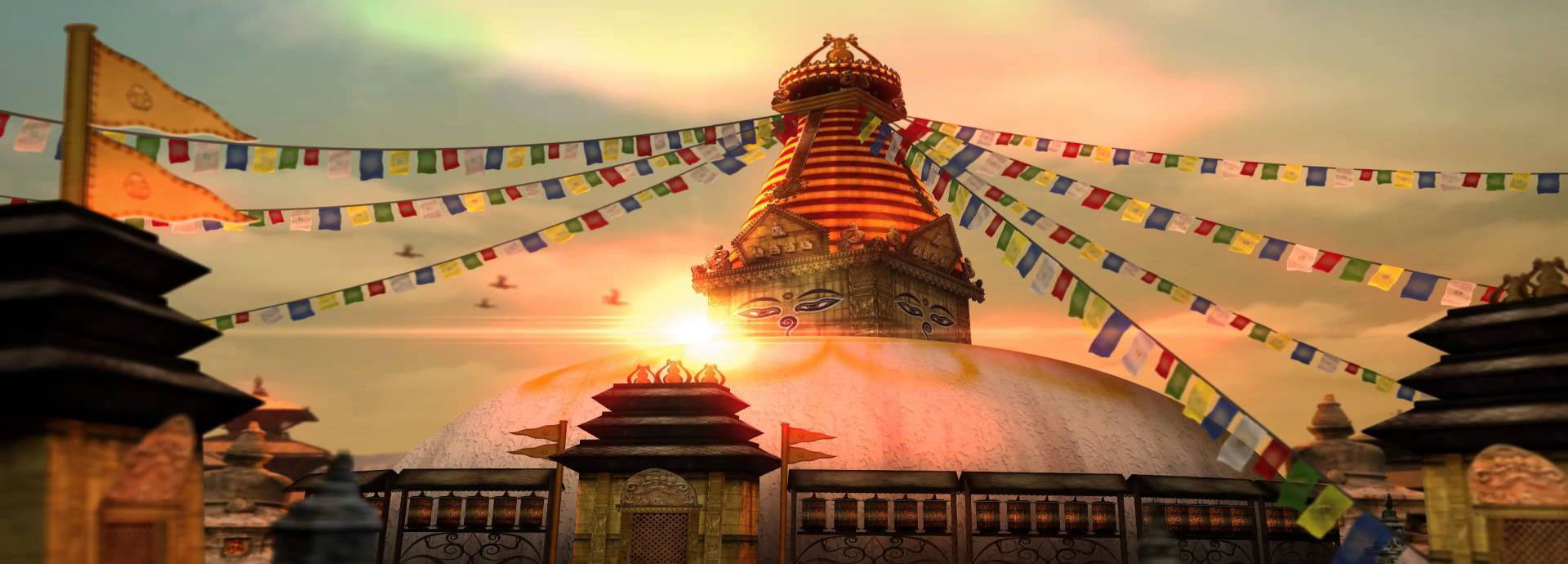
Breakfast at the hotel
We proceed slightly early this morning for a guided walking tour of Asan Bazaar with an archeological expert highlighting locals markets.
Asan Tole is an open market located at the intersection of many streets, near the Annapurna temple and the Ganesha shrine. The distinctive feature of this market is that it's always extremely busy. Besides the traditional goods sold here, you can find - spices, dried fruit, brass pots, and topi – traditional Nepali cap. The guests do enjoy this walk a lot as one gets to see the early morning chores of the city.
AM: Then we proceed for a sightseeing tour of Kathmandu city and Swayambhunath
Kathmandu City: The seat of royalty till the last century, Kathmandu Durbar Square is a wondrous cluster of ancient temples, palaces, courtyards and streets. Kumari, the living Goddess, the stone carved statue of ferocious Kal Bhairav, erotic carvings glorifying the art works in the temples, the giant temple of the Goddess Taleju and image of Shiva and Parvati peering outside through the window are just a few of the most noteworthy attractions in the area. One can't help but admire the exceptionally attractive woodcarvings, statues and buildings that are cluster in the area.
We also have a light experience of the Rickshaw ride.
Continue to Swayambhunath Stupa: A golden spire crowning a conical wooded hill, Swayambhunath Stupa is the most ancient and enigmatic of all the holy shrines in Kathmandu valley. Its lofty white dome and glittering golden spires are visible from many miles and from all sides of the valley. Historical records found on a stone inscription give evidence that the Stupa was already an important Buddhist pilgrimage destination by the 5th century AD.
Lunch on own
PM: Visit to Patan city
Patan City: Nowhere else can be seen such a compression of marvelous monuments within a limited space like in the Patan Durbar Square. Besides the old royal palace, which dominates all others in grace and grandeur, here is the 17th-century Krishna Mandir. Entirely made of stone, this shikhara-style structure with 21 pinnacles is dedicated to Lord Krishna, a savior deity in Hindu pantheon, and is equally noted for rare stone carvings on its walls, which depict various episodes of the epic wars of Ramayana and Mahabharata. Other landmarks within the Square are Tusha-hity (water spout), Sundari Chowk, Taleju Temple and the Keshav Narayan Chowk. The Hiranyavarna Mahavihar (Golden temple), Rudravarna Mahavihar and the terra-cotta temple of Mahabouddha are other highlights in the vicinity.
Overnight at hotel in Kathmandu (B)
Day 3 - KATHMANDU – RAFTING - TEMPLE TIGER CHITWAN (Distance: 189 kms 5-6 hours)
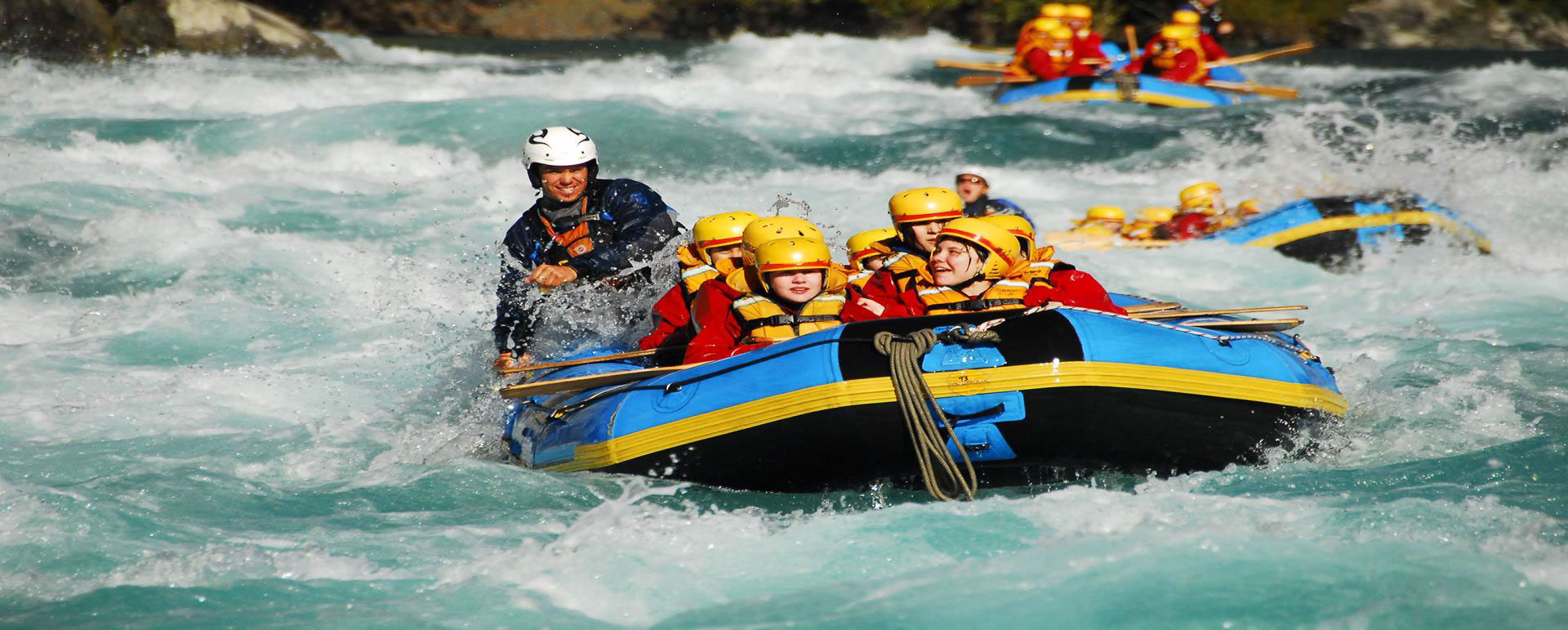
Breakfast at the hotel
Drive to rafting starting point and start rafting at Trisuli river
Lunch at the local restaurant
Later drive to Temple Tiger Green Jungle Resort in Chitwan.
Chitwan National Park, a UNESCO World Heritage Site is the first national park in Nepal. Formerly called Royal Chitwan National Park it was established in 1973 and granted the status of a World Heritage Site in 1984. It covers an area of 932 km2 and is located in the subtropical Inner Terai lowlands of south-central Nepal in the Chitwan district. In altitude it ranges from about 100 meters (330 ft) in the river valleys to 815 meters (2,674 ft) in the Churia Hills.
In the north and west of the protected area the Narayani- Rapti river system forms a natural boundary to human settlements. Adjacent to the east of Chitwan National Park is Parsa Wildlife Reserve; contiguous in the south is the Indian Tiger Reserve Valmiki National Park. The coherent protected area of 2,075 km2 represents the Tiger Conservation Unit (TCU) Chitwan-Parsa-Valmiki, which covers a 3,549 km2 huge block of alluvial grasslands and subtropical moist deciduous forests.
Location
Temple Tiger Green Jungle Resort is located in Amaltarighat close to the bank of the Narayani River and has close proximity to the National Park - a mere ten minutes boat ride away.
TEMPLE TIGER GREEN JUNGLE RESORT is situated 189 KM Southwest of Kathmandu, at an elevation of about 150 meters above sea level. The built up area of the Resort has been designed within its own surrounding forest adjusting to the natural relief and harmony. Green Jungle Resort has 18 single and double/twin air conditioned villas each built on a stilt overlooking the National Park and villages having its own private balcony. The layout of the resort has been designed to depict ethnic villas tastefully decorated rooms with typical artifacts having wooden floors with throw carpets, a cozy living area and the spacious attached made bathrooms with solar heated running hot and cold water. The thatched roofs of the villas are from the abundant Siru grass therefore they blend easily into the surroundings. The Resort has a central dining area with a large terrace overlooking the jungle and the village. It has a fully fledged bar and lounge with library cum reading room. It also has its own organic farm which supplies vegetables to the resort.
Upon arrival at Temple Tiger, the guests will be given a warm welcome by the staff and the elephants of the resort. They will then be served welcome drink & will be briefed by the Guest Relation officer regarding the National Park and the programs available.
After a bit of relaxation in the room
4:00pm Elephant Safari
Guests will be mounted on elephant back and taken for a jungle safari for 1 -2 hours penetrating through dense grasslands and to the riverine forest to view wildlife in their natural habitat. It is the favorite habitat for rhinoceros and other mammals
06:00pm Tea / Coffee
6:15-7:15 pm Slide show presentation on wildlife by our senior naturalist
07:30pm – 09:00pm Dinner at the Round House
Overnight at Temple Tiger Green Jungle Resort (B, L, D)
Day 4 - FULL DAY ACTIVITIES AT TEMPLE TIGER
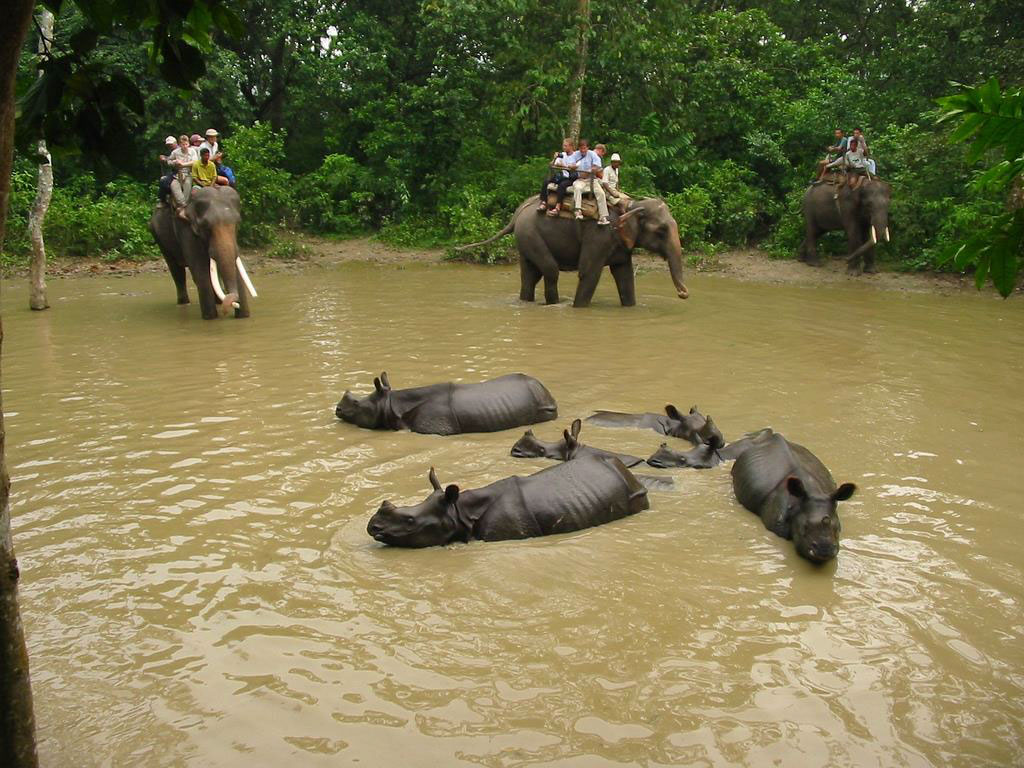
07:00am Breakfast at the Resort
Transfer to a particular area to start the program for the day.
10:00-11:00 am Canoe & Boat ride down the Narayani River
The boat will provide an opportunity of viewing the Gharial crocodiles as well as the mugger crocodiles, otters and varieties of other water birds
11:00 - 12:00 noon Jeep drive
12:15 - 1:00 pm Picnic Lunch inside Chitwan National Park
1:15 - 2:00 pm Elephant Briefing – Elephant stables visit
2:00 – 3:00pm Nature Walk for bird watching or relax
Return back to the shore by a jeep and a boat ride.
4:00 pm Ox cart ride to the Tharu Village
The guests will be escorted to the nearby Tharu Village by bullock-cart and also will visit home of the Indigenous People. We experience the village Walks to the typical villages of Tharu, Bote and Musar families.
7:00pm BBQ Dinner with a cultural Tharu dance program
Overnight at Temple Tiger Green Jungle Resort ( B, L , D)
Day 5 - TEMPLE TIGER – BANDIPUR BY SURFACE (Distance: 118kms 4 -5 hours)
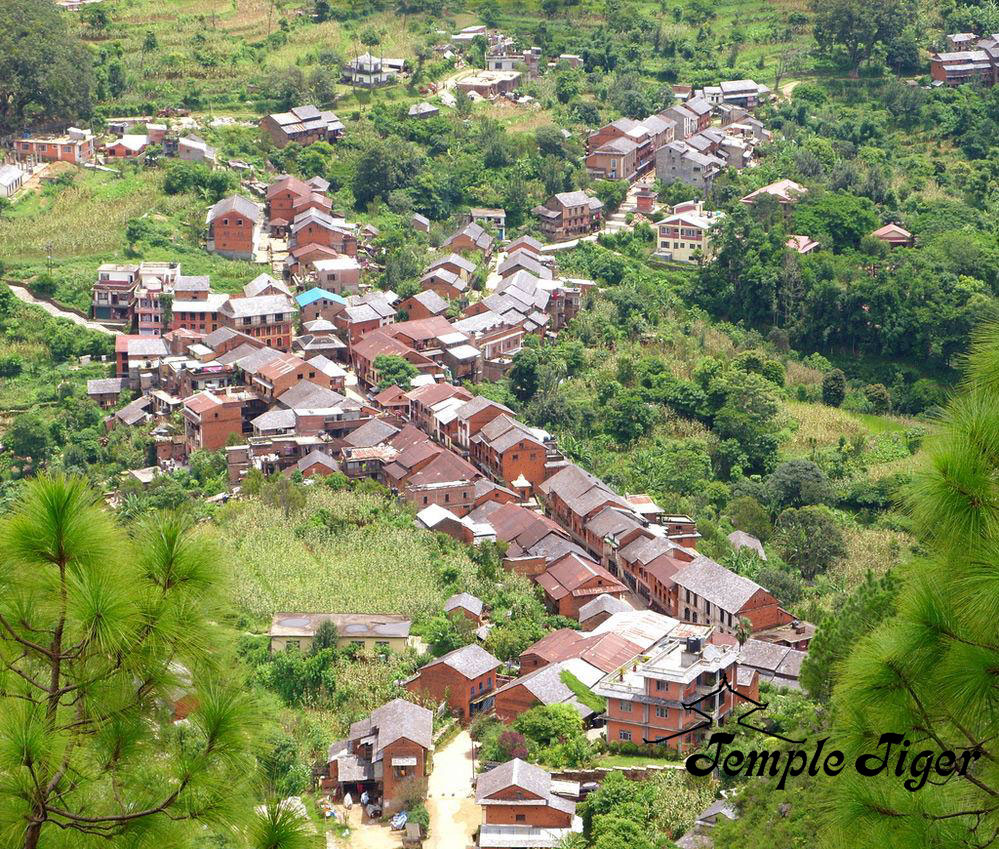
Early morning bird watching tour at Temple Tiger
Chitwan National Park covers 932 sq. km. and supports some 650 species of birds. Flocks of Common and Demoiselle Cranes occur on passage between March and May and October/November. Along the marshes and small lakes there are Cormorants, Darter, Cinnamon Bittern, Black-crowned Night and Purple Herons, Asian Open bill, Woolly-necked and Lesser Adjutant Storks, Lesser Whistling Duck, Cotton Pygmy Goose, Balloons Ruddy-breasted and Brown Crakes, Purple Gallinule, Bronze-winged Jacana, Painted Snipe and Stork-billed Kingfisher, Chestnut-crowned and Spotted Bush Warblers, Yellow bellied Prinia, Clamorous Reed, dusky and Smoky Warblers, and Red-capped Babbler.
After having breakfast, drive to bandipur and transfer to hotel.
Bandipur is a beautiful town situated on a high ridge above Dumre. With its glorious eighteenth century Newari architecture, the whole town is like a living open-air museum of Newari culture. Before the construction of the Pokhara to Kathmandu Highway, this town was a major stop on the trade route between India and Tibet. Though not busy trades stop any more, the city is still frequently visited by a lot of people.
Tundikhel, Baralthok, Rani Ban, Bindebasini Mandir, Mahalaxmi Mandir, Khadga Devi Mandir, Tin Dhara and Bandipur silk farm are some interesting sites in Bandipur. You can also explore the hills around Bandipur and take a walk to the Siddha Gufa (the largest cave in Nepal), Patal Dwar & hike to a nearby hill known as Gadhi.
Walking tour in Bandipur to visit temples and see the Newari Architecture and interact with the locals to understand their lifestyle.
Lecture by the accompanying guide on the Newari culture
Dinner at hotel
Overnight at hotel in Bandipur (B)
Day 6 - BANDIPUR – POKHARA BY SURFACE (Distance: 80 km 2- 3 hours)
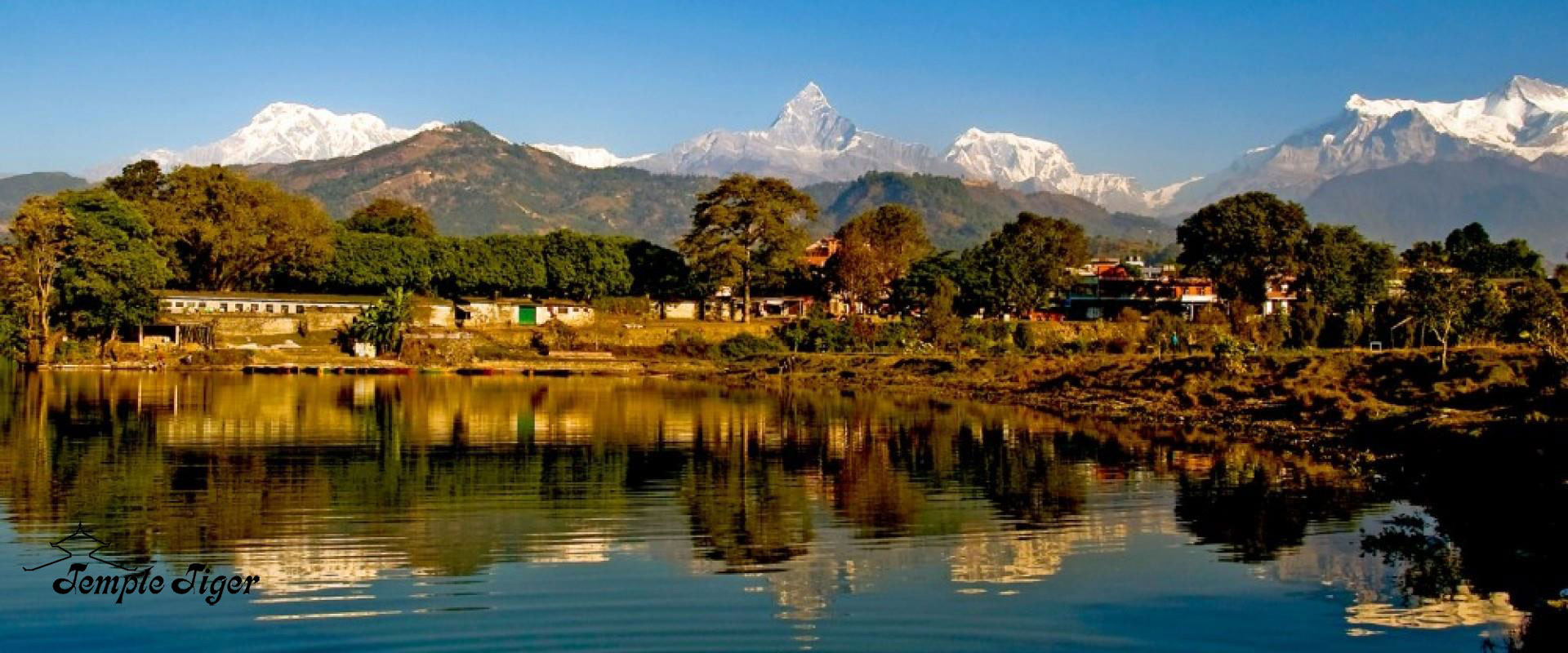
Breakfast at the hotel
Drive to Pokhara
Pokhara, Sub-Metropolitan City is the second largest city of Nepal and is situated about 200 km west of the capital Kathmandu. It serves as the headquarters of Kaski District, Gandaki Zone and the Western Development Region. Pokhara is one of the most popular tourist destinations in Nepal. Three out of the ten highest mountains in the world — Dhaulagiri, Annapurna I and Manaslu — are situated within 30 miles (linear distance) of the city, so that the northern skyline of the city offers a very close view of the Himalayas. Due to its proximity to the Annapurna mountain range, the city is also a base for trekkers undertaking the Annapurna Circuit through the ACAP region of the Annapurna ranges in the Himalayas.
Lunch at local restaurant with lecture by an Ex- Gurkha soldier on his experience
Afternoon Visit Mountain and Gurkha Museum:
Mountain Museum: Nepal Mountaineering Association (NMA), established on 1 Nov 1973, initiated the establishment of International Mountain Museum (IMM) in Pokhara. The basic objective for its establishment was made to record, document and chronicle the past and present development of mountaineering activities in the world in general and to preserve the saga of the momentous feats in the history of mountaineering in the Himalayan peaks in particular.
Day 7 - POKHARA
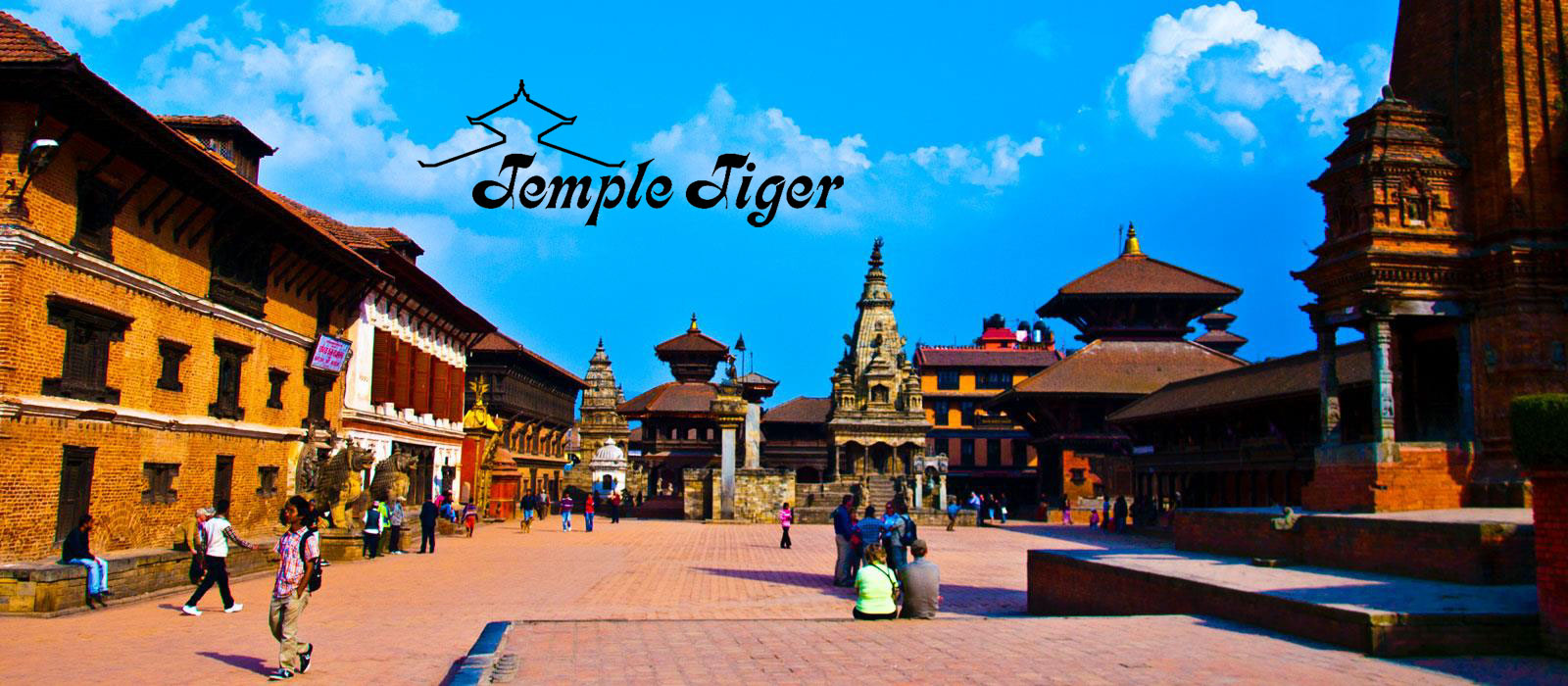
Optional Paragliding- weather permitting
Breakfast at hotel
AM: Visit World Peace Pagoda
World Peace Pagoda, a massive Buddhist stupa is situated on the top of a hill on the southern shore of Phewa Lake. Besides being a impressive sight in itself, the shrine is a great vantage point which offers the spectacular views of the Annapurna range, Phewa Lake, and the Pokhara city
PM: Half day sightseeing tour of Pokhara Valley
Devi’s fall: Locally known as Patale Chango (Hell’s Fall) also known as Devins and Davids is a lovely Waterfall which is about 2 km south West of Pokhara airport on the Siddhartha Highway. Legend has it that a trekker by the name of Davy, was washed away by the Padi Khola and mysteriously disappeared down into an underground passage beneath the fall.
Mahendra Cave: Another of nature’s wonders in Pokhara is the Mahendra gufa. This large limestone cave is locally known as the House of Bats an apt name for it. A two- hour's walk to the north of Pokhara, it is best to bring our own torch to see the stalactites and stalagmites, as well as the local winged residents.
Seti Gandaki Gorge: Another of Pokhara's natural wonders is the Seti Gandaki River. Flowing right through the city, the boisterous river runs underground at places. Amazingly, at certain places the river appears hardly two meters wide. However, its depth is quite beyond imagination, over 20m. Mahendra pul, a small bridge near the old mission hospital, provides a perfect view of the river’s dreadful rush and the deep gorge made by its powerful flow.
Bindyabasini Temple: The old Bazaar is also home to one of Pokhara’s most important shrines. Locally called the Bindyabasini Mandir, this white dome- like structure dominates a spacious stone – paved courtyard built atop a shady hillock. It is dedicated to Goddess Bhagawati who is yet another manifestation of Shakti. The park – like grounds offers a fine picnic area, and on Saturdays, and Tuesdays when devotees flock there to offer sacrifices, it takes on a festive flavor.
Dinner at hotel
Overnight at hotel in Pokhara (B)
Day 8 - POKHARA - KATHMANDU BY FLIGHT (Flight time: 30 minutes)
Breakfast at hotel
Fly back to Kathmandu and transfer to the hotel.
Depart for sightseeing tour of Bhaktapur City
Bhaktapur: Lying just 08 miles (11km) east of Kathmandu; the city of devotees, Bhaktapur is situated at an altitude of 1401m, it covers an area of 7 square miles and is shaped like a conch shell. The whole town is a UNESCO World Heritage Site and is filled with palaces, temples, statues and squares connected by a maze of largely pedestrian-only streets. Pottery and weaving are the traditional industries. This splendid palatial square has its gems in such artistic masterpieces as the 55-Windows Palace, the Golden Gate, Golden Sprout, the Taleju temple complex and Nyatapola-the five-storied temple -in the nearby Taumadhi Square. The 14th-century Dattatreya temple and the world famous Peacock Window at Tachapal keep visitors spellbound. The city is also commonly known as Bhadgaon.
We then continue our tour by visiting a Pottery Farm to enhance our knowledge of Pottery
Farewell dinner dinner at local restaurnt.
Overnight at hotel in Kathmandu (B, D)
Day 9 - DEPARTURE
Free till departure and later, transfer to the International airport to connect the flight to onward destination. On departure at hotel a khada will be put on you symbolizing a safe Journey back home.
